Neptune ♆

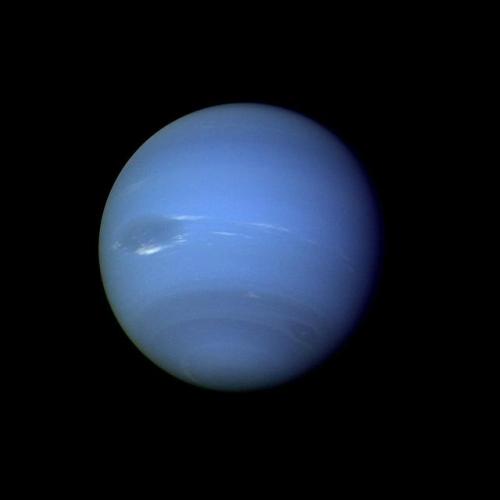
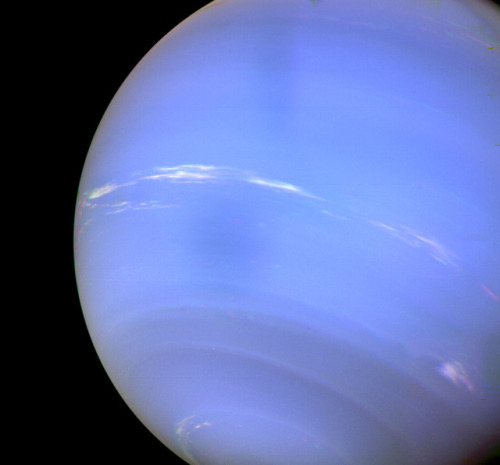
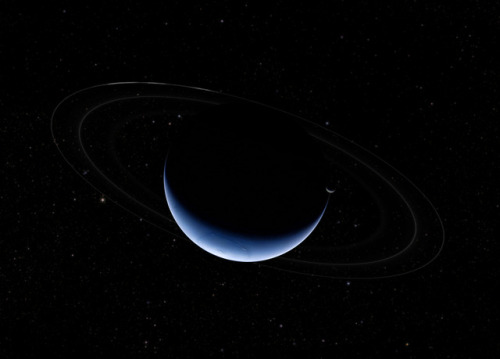
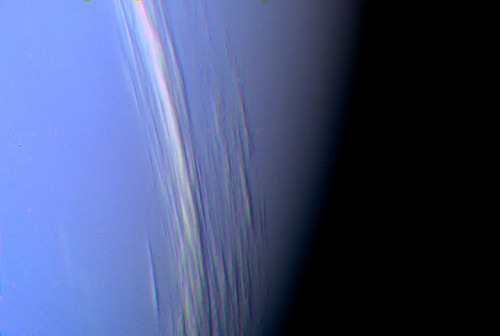
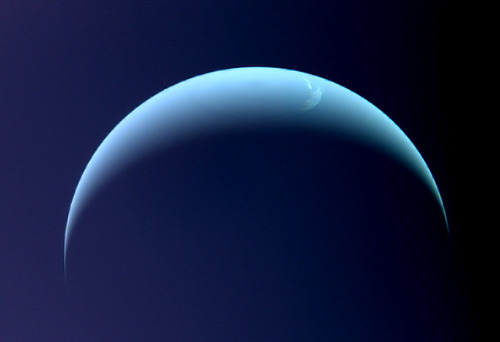
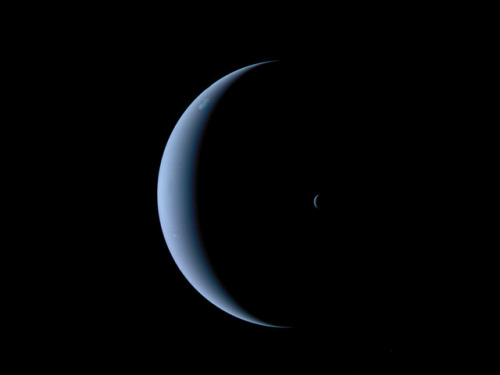
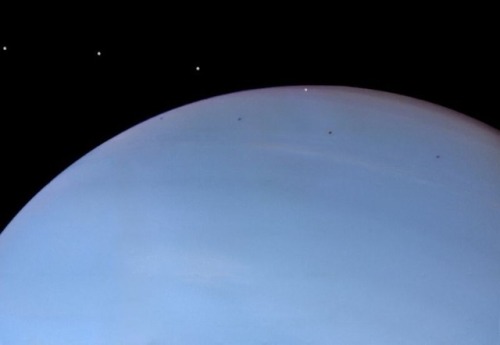
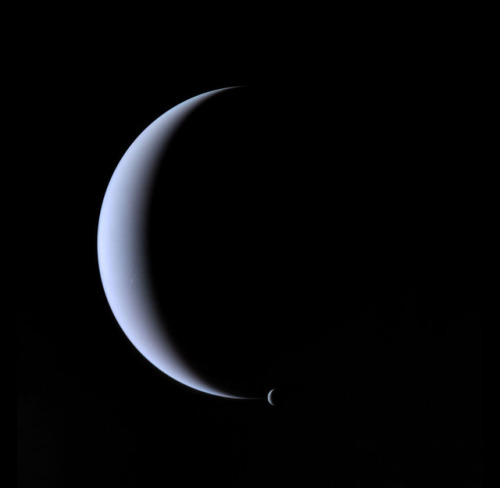
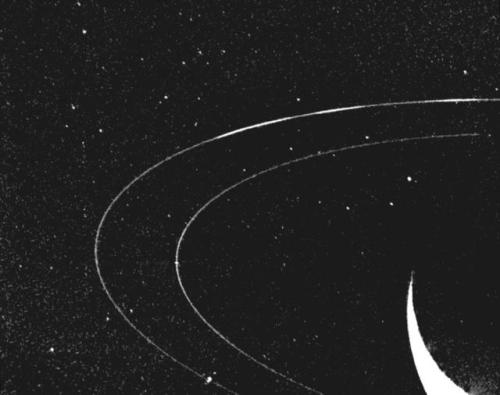
Neptune ♆
On this day in 1846 was discovered the planet Neptune.
The ice giant Neptune was the first planet located through mathematical predictions rather than through regular observations of the sky. (Galileo had recorded it as a fixed star during observations with his small telescope in 1612 and 1613.) When Uranus didn’t travel exactly as astronomers expected it to, a French mathematician, Urbain Joseph Le Verrier, proposed the position and mass of another as yet unknown planet that could cause the observed changes to Uranus’ orbit. After being ignored by French astronomers, Le Verrier sent his predictions to Johann Gottfried Galle at the Berlin Observatory, who found Neptune on his first night of searching in 1846. Seventeen days later, its largest moon, Triton, was also discovered.
Neptune is invisible to the naked eye because of its extreme distance from Earth. Interestingly, the highly eccentric orbit of the dwarf planet Pluto brings Pluto inside Neptune’s orbit for a 20-year period out of every 248 Earth years. Pluto can never crash into Neptune, though, because for every three laps Neptune takes around the Sun, Pluto makes two. This repeating pattern prevents close approaches of the two bodies.
Nearly 4.5 billion kilometers (2.8 billion miles) from the Sun, Neptune orbits the Sun once every 165 years.
Uranus’ blue-green color is also the result of atmospheric methane, but Neptune is a more vivid, brighter blue, so there must be an unknown component that causes the more intense color.
Despite its great distance and low energy input from the Sun, Neptune’s winds can be three times stronger than Jupiter’s and nine times stronger than Earth’s.
Winds on Neptune travel faster than the speed of sound.
In 1989, Voyager 2 tracked a large, oval-shaped, dark storm in Neptune’s southern hemisphere. This “Great Dark Spot” was large enough to contain the entire Earth.
Neptune has five known rings. Voyager 2’s observations confirmed that these unusual rings are not uniform but have four thick regions (clumps of dust) called arcs. The rings are thought to be relatively young and short-lived.
Neptune has 14 known moons, six of which were discovered by Voyager 2.
Triton, Neptune’s largest moon, orbits the planet in the opposite direction compared with the rest of the moons, suggesting that it may have been captured by Neptune in the distant past.
To know more about the planet Neptune click here and here.
Images credit: NASA/JPL- Caltech (some images processed by Kevin M. Gill)
More Posts from Delightfulskywalker and Others
❤


Star Wars narrative symmetry.
Feel free to add more :)



Odin’s Children

Rika | Jihyun | Jumin | Zen | Seven | Jaehee | Yoosung | Unknown


Milky way and night cherry trees, magical shots taken in Nishiyoshino (Nara prefecture), by @v0_0v______mk
this is a real deleted scene from revenge of the sith







50th Anniversary of the Lunar Landing - July 20th, 1969
Apollo 11 was launched on a Saturn V rocket from the Kennedy Space Center on July 16th, 1969 carrying Commander Neil Armstrong, lunar module pilot Buzz Aldrin, and command module pilot Michael Collins. Armstrong and Aldrin became the first humans to land on the surface of the moon when the Apollo Lunar Module Eagle landed in the Sea of Tranquility on July 20, 1969, at 20:17 UTC. Nearly a day later the men rejoined Collins in the command module Columbia, held in lunar orbit, and set a trajectory back to Earth. After over eight days in space Apollo 11 splashed down in the Pacific Ocean on July 24th.
The black and white images of the first lunar landing were received and broadcast live to at least 600 million people on Earth, around a fifth of the total population, a viewership record at the time. Within the USA, 94% of American televisions tuned in to the broadcast.
-
 poofagenius liked this · 2 weeks ago
poofagenius liked this · 2 weeks ago -
 diallokenyatta liked this · 2 weeks ago
diallokenyatta liked this · 2 weeks ago -
 sotsogm liked this · 2 weeks ago
sotsogm liked this · 2 weeks ago -
 briefly-noted reblogged this · 2 weeks ago
briefly-noted reblogged this · 2 weeks ago -
 1rh2nxoz reblogged this · 2 months ago
1rh2nxoz reblogged this · 2 months ago -
 i-iii-iii-vii liked this · 3 months ago
i-iii-iii-vii liked this · 3 months ago -
 stellarseeming reblogged this · 8 months ago
stellarseeming reblogged this · 8 months ago -
 stellarseeming liked this · 8 months ago
stellarseeming liked this · 8 months ago -
 cernunnos1990 reblogged this · 10 months ago
cernunnos1990 reblogged this · 10 months ago -
 cernunnos1990 liked this · 10 months ago
cernunnos1990 liked this · 10 months ago -
 allarounddivinity reblogged this · 11 months ago
allarounddivinity reblogged this · 11 months ago -
 sailorviii liked this · 11 months ago
sailorviii liked this · 11 months ago -
 yassygoth liked this · 1 year ago
yassygoth liked this · 1 year ago -
 demichrising liked this · 1 year ago
demichrising liked this · 1 year ago -
 spiritualitysalad liked this · 1 year ago
spiritualitysalad liked this · 1 year ago -
 ravexandxlust liked this · 1 year ago
ravexandxlust liked this · 1 year ago -
 starryfishbonesoup liked this · 1 year ago
starryfishbonesoup liked this · 1 year ago -
 spacetism liked this · 1 year ago
spacetism liked this · 1 year ago -
 iwillhaveamoonbase liked this · 2 years ago
iwillhaveamoonbase liked this · 2 years ago -
 erikaalvaradoblog liked this · 2 years ago
erikaalvaradoblog liked this · 2 years ago -
 thy420 liked this · 2 years ago
thy420 liked this · 2 years ago -
 wisent15 liked this · 2 years ago
wisent15 liked this · 2 years ago -
 wisent15 reblogged this · 2 years ago
wisent15 reblogged this · 2 years ago -
 not-posting-anymore liked this · 2 years ago
not-posting-anymore liked this · 2 years ago -
 mizar2 reblogged this · 2 years ago
mizar2 reblogged this · 2 years ago -
 ttscz liked this · 2 years ago
ttscz liked this · 2 years ago -
 kitapokuyormuhtemelen liked this · 2 years ago
kitapokuyormuhtemelen liked this · 2 years ago -
 rastronomicals liked this · 2 years ago
rastronomicals liked this · 2 years ago -
 christabelq liked this · 2 years ago
christabelq liked this · 2 years ago -
 burtkilljoy liked this · 2 years ago
burtkilljoy liked this · 2 years ago -
 groupwest liked this · 2 years ago
groupwest liked this · 2 years ago -
 nomvdsoul liked this · 2 years ago
nomvdsoul liked this · 2 years ago -
 dark----blue reblogged this · 2 years ago
dark----blue reblogged this · 2 years ago -
 gh0stblonde reblogged this · 2 years ago
gh0stblonde reblogged this · 2 years ago
"Hope is like the sun. If you only believe it when you see it, you'll never make it through the night." -Princess Leia
286 posts











